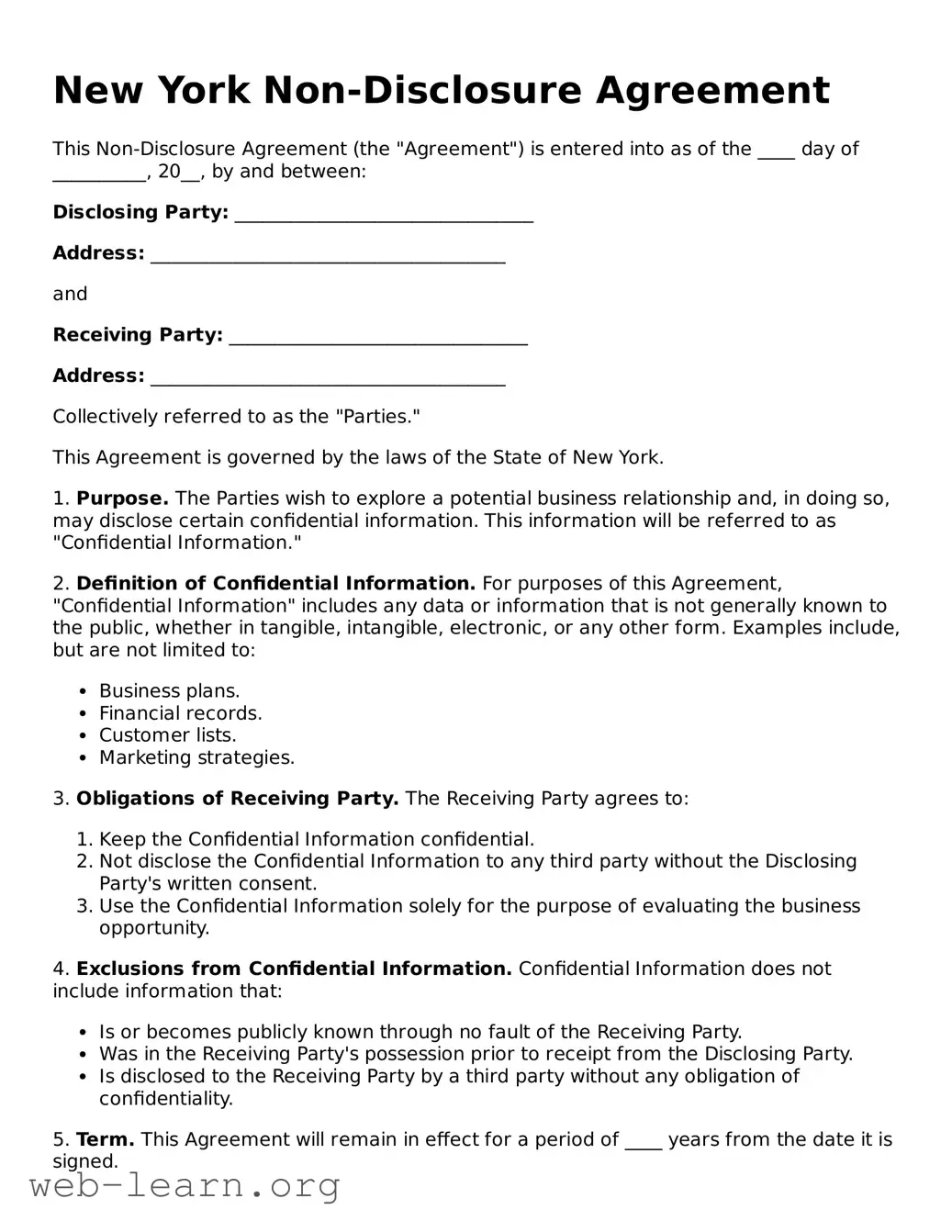New York Non-Disclosure Agreement
This Non-Disclosure Agreement (the "Agreement") is entered into as of the ____ day of __________, 20__, by and between:
Disclosing Party: ________________________________
Address: ______________________________________
and
Receiving Party: ________________________________
Address: ______________________________________
Collectively referred to as the "Parties."
This Agreement is governed by the laws of the State of New York.
1. Purpose. The Parties wish to explore a potential business relationship and, in doing so, may disclose certain confidential information. This information will be referred to as "Confidential Information."
2. Definition of Confidential Information. For purposes of this Agreement, "Confidential Information" includes any data or information that is not generally known to the public, whether in tangible, intangible, electronic, or any other form. Examples include, but are not limited to:
- Business plans.
- Financial records.
- Customer lists.
- Marketing strategies.
3. Obligations of Receiving Party. The Receiving Party agrees to:
- Keep the Confidential Information confidential.
- Not disclose the Confidential Information to any third party without the Disclosing Party's written consent.
- Use the Confidential Information solely for the purpose of evaluating the business opportunity.
4. Exclusions from Confidential Information. Confidential Information does not include information that:
- Is or becomes publicly known through no fault of the Receiving Party.
- Was in the Receiving Party's possession prior to receipt from the Disclosing Party.
- Is disclosed to the Receiving Party by a third party without any obligation of confidentiality.
5. Term. This Agreement will remain in effect for a period of ____ years from the date it is signed.
6. Governing Law. This Agreement shall be governed by and construed in accordance with the laws of the State of New York.
7. Signatures. The Parties acknowledge and agree to the terms of this Agreement by signing below:
Disclosing Party Signature: ___________________________
Date: ______________________________
Receiving Party Signature: ___________________________
Date: ______________________________
